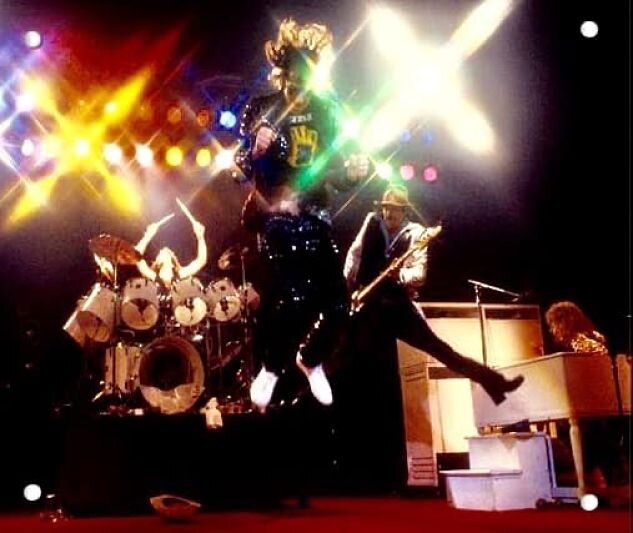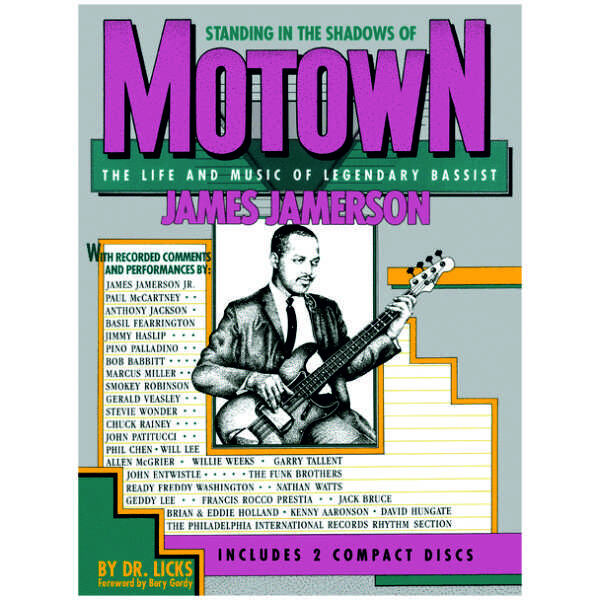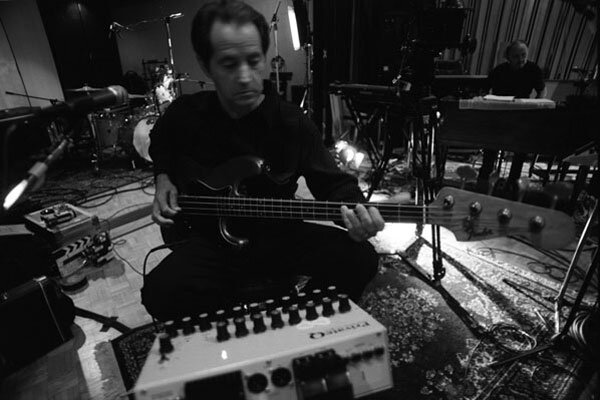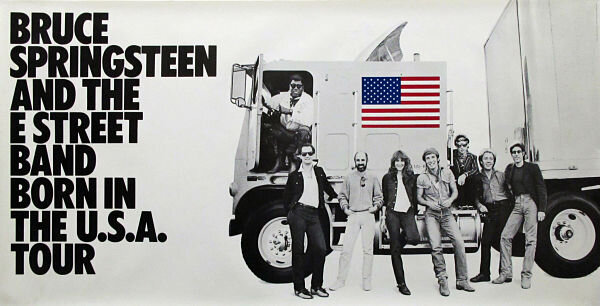
By Joe Gagliardo
“Because this is the Wooba Gooba sayin’ to ya love comes once and when it comes you better grab it fast ‘cuz sometimes the love you grab ain’t gonna last…”
Revered as the “Ace of Bass” – Danny Klein’s passion for rhythm & blues, jazz, pop, soul, Motown, and British Invasion formed the foundation for America’s greatest bar band – the mighty J. Geils Band.
Born in New York City, and raised in New Jersey, the Kleins were not a musical family – in fact, there was not a record player in the household until his sister purchased one!
Danny’s musical education came from listening to AM radio where he soaked up Motown and Memphis Soul, and a lot of rhythm and blues and Blues coming from New York.
“[I listened to] New York AM radio, a whole lot of R&B, Otis and the Supremes, the Motown thing, the Memphis thing, and the New York thing, and all that, a lot of R&B in those days, a lot of black stuff…I guess before that like in the ’50s you’d never hear that, the original artists doing the music, you’d hear Patti Page covers, you know that kind of thing. But at that time, in the ’60s, it started to cross over…also there were shows out of the Bronx…goin’ on at night…they’d play some really funky stuff and blues…so that’s basically how I got it.”
Klein attended Worcester Polytechnic Institute in Massachusetts in 1964, studying Chemical Engineering. It was there that he met John Geils (“Jay”) and Richard Salwitz, aka “Magic Dick.” With the folk era starting to boom, they formed a jug band. Jay asked Danny, who did not play an instrument, whether he wanted to play bass or drums. Danny chose the former – and his first instrument was a washtub bass at the age of 21. At that point Jay was playing an acoustic guitar.
As the band started playing more blues, Jay gravitated to electric guitar, and Danny graduated from washtub bass to a rented Harmony bass, that, according to Danny “had a neck that looked like a roller coaster.” Although he is left-handed, due to a lack of financial resources, he played a right-handed bass.
A field trip to New York City in 1966 to see Muddy Waters sealed the deal for Danny—he quit school and immersed himself in music. Around that time, vocalist Peter Wolf, and drummer Stephen Jo Bladd were in the process of leaving their band, The Hallucinations. They joined forces with Danny, Jay and Magic Dick, and the J. Geils Band was formed. Seth Justman was added on keys about a year later.
The band forged a remarkable career – releasing over a dozen albums, and numerous hit singles between 1970 and 1984. As performers, the J. Geils Band were second to none as headliners and as a support band.
Note that the J. Geils band waxed two legendary and incendiary live albums, Full House and Blow Your Face Out. Listening to those records makes it clear – Danny was a driving force in the J. Geils Band’s rhythm and blues sound. Be advised to watch vintage J. Geils Band videos and witness Danny as a catalyst in their acclaimed high energy live shows.
As we have all had gig nightmares, the one Danny would like to forget is having a run-in with an obscured floor monitor which caused him to hit the deck in front of 70,000 people, while opening for the Rolling Stones in Cleveland.
Danny and the J. Geils band backed Buddy Guy and Junior Wells on two tracks for their Plays The Blues release in 1972: “This Old Fool” and “Honeydripper.”
“This Old Fool” https://youtu.be/4O2YMauh3hs
“Honeydripper” https://youtu.be/xC1dlEEgtFU
As these were two of his heroes who he had seen play many times, and had covered a number of their songs, Danny was sweating bullets to be in the same room with these guys, let alone record with them, but it worked out great.
When the J Geils Band came to a halt in 1984, Danny left music for about ten years. He attended culinary school in Cambridge, and became a Chef in Fitchburg, Massachusetts. While living in Fitchburg, he got the itch to play again and he started playing a few local gigs. One of the guys he played with was Babe Pino on harp. At some of the shows, Pino’s guitarist brother, Ken, would join them on stage. Ken had played with Johnny Copeland for ten years, and got Danny a gig playing with Blues guitarist, Debbie Davies. Danny went on the road for a couple of years with Debbie, touring the United State and Europe. He played on her 1994 release entitled Loose Tonight. Danny and Pino decided to start their own Blues/r&b band – Stonecrazy, which had a ten-year run.
In the 21st Century, Danny Klein never misses a J. Geils Band reunion, and he’s still working the clubs in the New England area as band leader of Danny Klein’s Full House, celebrating the music of the J. Geils Band. Keep tabs on Danny via his website: https://www.dannykleinsfullhouse.com/
At the time he started Full House, the J. Geils Band was not touring, and it seems as if no one was playing that music – consequently a Geils repertory with an actual Geils founding member was perfect solution. According to Danny, the other band members are fans of the J. Geils Band, as well as being great musicians.
After all these years, Danny still loves to play live, and gets a thrill out of playing in front of an appreciative audience. He loves the feeling of learning something new, and growing musically.
In terms of his basses, after ditching the Harmony, he quickly went from a Fender Telecaster, to a Fender Jazz bass, then to a Fender Precision Bass, which he played for years, along with a G&L. He has also played a Steinberger, as well as five string Spector bass.
His current go-to basses are both Dudacus basses, made by Steve Baxter, a five string Fuchsia retro-looking bass, and a Silver Sparkle Flying V with a mirrored pickguard.
His bass playing continues to be influenced by the Blues, Soul and R&B music he heard coming over that AM radio station from New York, and specifically by Duck Dunn, James Jamerson, Harvey Brooks (Bob Dylan, Electric Flag, and so much more), and Johnny B Gayden, bassist for Albert Collins, and many Blues legends.
Klein is the consummate pocket player, whose syncopated lines, coupled with his harmonic extensions, taught rock bass players that there’s more to life than 1-3-5-b7 patterns. In addition to his sharp bass playing, Danny was, and is, a sharp-dressed man!
Danny’s smokin’ intro to “Did You No Wrong” https://youtu.be/-coyY2yvIWE
Danny Klein funkin’ on “Surrender” from Monkey Island 1977 https://youtu.be/X6dFeVos3X0
Danny thumpin’ on “Detroit Breakdown” https://youtu.be/5Uzgqn-trKE
Danny’s fat tone and reggae phrasing on “Give It To Me” https://youtu.be/zK-FwizXZqs
Danny’s driving bass on “Lookin’ for a Love” Live https://youtu.be/iRezwP_znTc
Danny’s pulsing bass on “Insane, Insane Again” https://youtu.be/__dWLPE41_A
Danny’s solo on “River Blindness” https://youtu.be/Vkx6IvL-azE



 (
(







